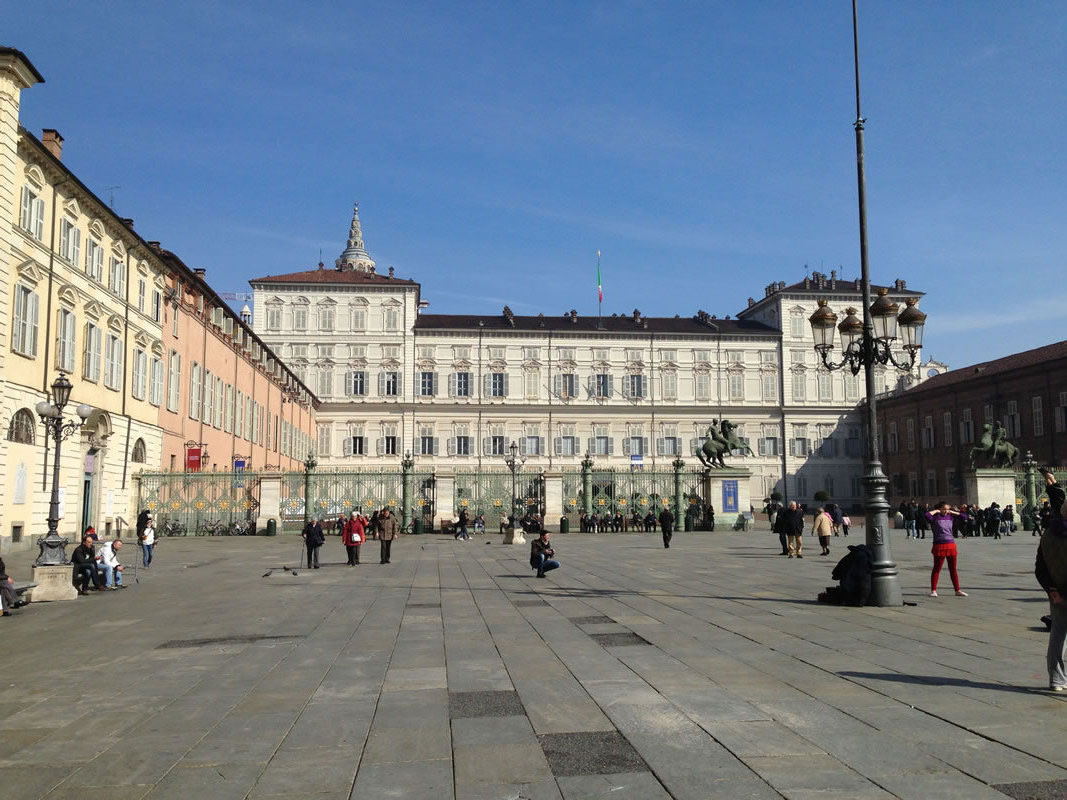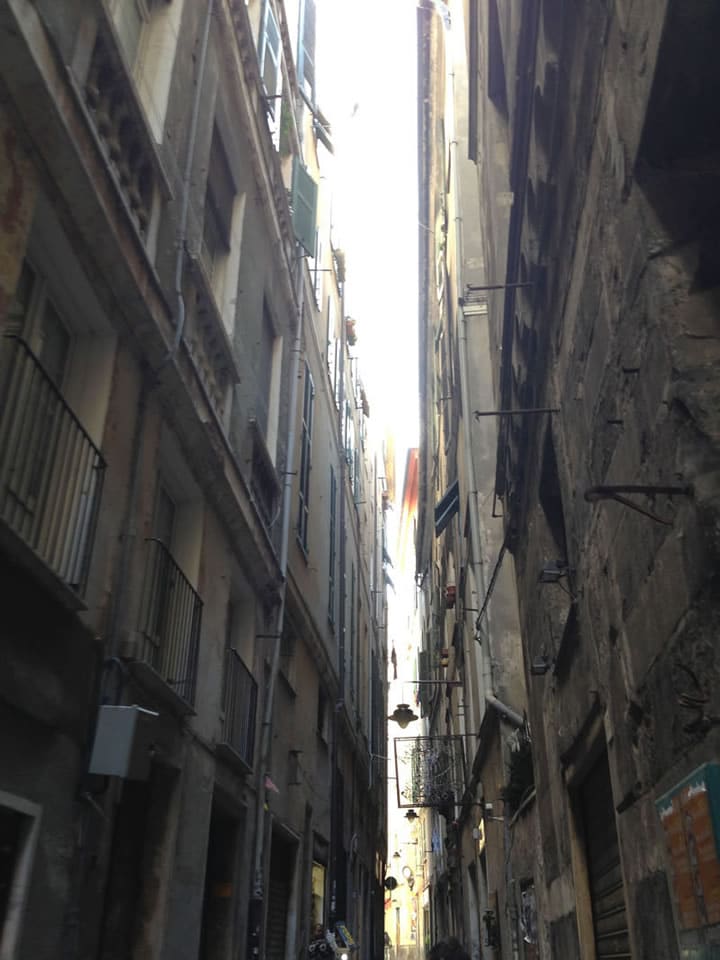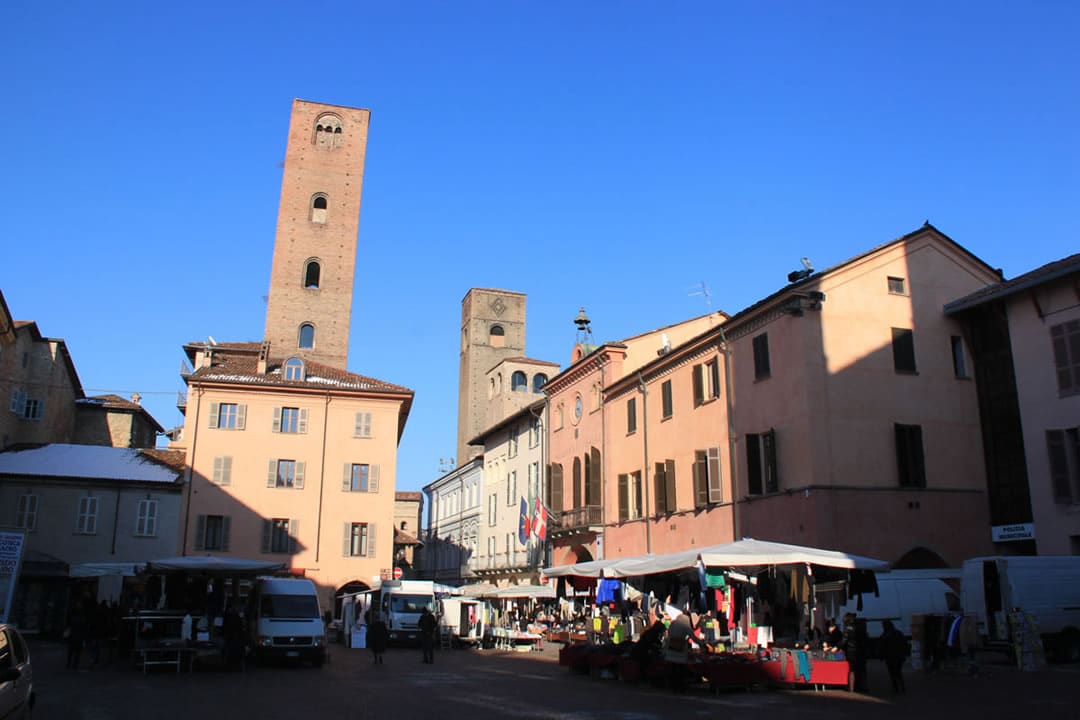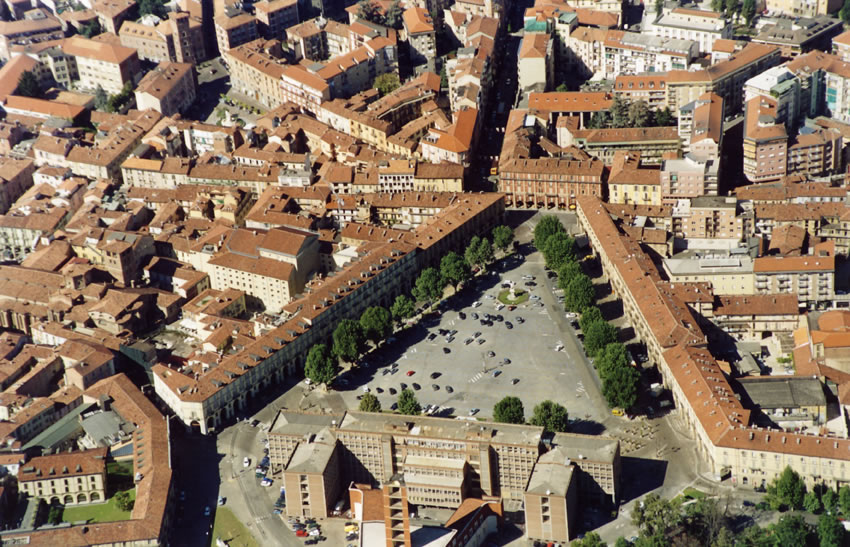
TORINO
Torino was the first capital of Italy after constitution in 1861 – it is also called the baroque capital.
Baroque and Art Deco are the predominant architectures of the city. The streets run in almost rectangular lines as if from a drawing board, ...
a heritage of Roman times, with imposing, ochre-coloured Fiat exposition downtownresidences (palazzos), and large boulevards. Most squares are adorned with a bronze portraying some hero. Many visitors here feel reminded more of Paris than of Rome. A city, of which Nietzsche said it was the only large town he liked. He lived on Via Carlo Alberto 6. “Ecco una citta secondo il mio cuore.” “This is a city to my heart’s liking.”
With its abundance of piazzas and arcades, monuments, arts (40 museums), expansive green areas, cafes, restaurants, artefacts, expositions and cultural events, Torino caters to all tastes. Night life, music (jazz festival in July), live sessions, coffee culture, fashion and design, antiques (the Bal̫n just behind Porta Palazzo is the antique trading and fleamarket area of Torino), the largest open-air market in Europe; palaces and castles, the Shroud of Torino (linen cloth with the image of a crucified man believed to be Jesus) Рall to be explored!
Not to forget Fiat, of course; Fiat means thousands of jobs in Torino. Every other year (2003, 2005 …) for the international motorshow “salone dell´auto,” all of Torino is dedicated to the world of automobiles.
GENOA (Liguria)
Genoa is the city in northern Italy you either love or hate. We love it. It has atmosphere, an abundance of cultural sights and the best ‘pesto’ of the region.
Gustave Flaubert in 1845 wrote:
“I have seen a most beautiful road, the Via Aurelia, and now I am in a beautiful city, a truly beautiful city: Genoa. I walk on marble, everything is made of marble: stairs, terraces, palaces.”
Genoa is laid out vertically with a maze of little alleys and streets in the historic center. Stately residences stand next to modest little houses, and one window is within arm’s reach of the next. Amidst it all, the numerous large churches with their black and white marble form a stark contrast to the playful baroque facades suddenly appearing around the next corner.
Frescoes, splendid golden ceilings and mighty entrance gates meet the eye. A visit of Via Garibaldi, Palazzo Bianco and Piazzo Rosso should not only be reserved to art lovers. Corso Italia is the major seaside promenade. The real life happens in Sottoripa, in the narrow alleys with a pulsating atmosphere of dealers and vendors, the smells, people bustling, where you may unexpectedly drink the best espresso or find the best pesto you ever had.
On the occasion of the Christopher Columbus anniversary in 1992, the largest and most modern aquarium in Europe was built in Genoa.
For an imposing view over the whole city, take the Zecca Righi cable car until final destination and follow a short foothpath leading from there.
Last but not least another quote from a famous visitor: In 1853, composer Richard Wagner in a letter to his first wife Minna aptly describes his impressions of Genoa:
. “For several days I was living in a state of true mesmerization, I was unable to follow a set plan to explore the city’s masterworks, but rather indulged in this new environment like I would in a piece of music. I have never seen anything like Genoa before! The city is indescribably beautiful, splendid, full of character. I don’t know where to start to convey to you the impression all of this has made on me and continues to do…”.


Alba
First to mention in connection with Alba are, of course:
truffles!
In October, a national truffle fair is held in Alba, a spectacle governing all senses and feast to every palate.
Alba’s main shopping street features cafes, restaurants, delicatessen, enoteques (wine-tasting bar amp; shop) and numerous fashion boutiques, furniture and design stores.
Dotted in between, beautiful churches and lovely squares wait to be discovered. Strolling through the city, the visitor may stumble on the San Lorenzo dome, the 13th century church of San Domenicus, St. John’s church, the gender towers, city hall (14th century) and much more.An open-air market takes place every Saturday in a pleasantly relaxed atmoshphere.
Asti
In the Middle Ages, Asti was the most mighty and wealthy city state in Piedmont. In the city center, the middle age townscape has remained almost completely intact;...
a few baroque house fronts, patrician houses, gender towers and gothic churches. The “Douja d´Or” wine fair staged here in the fall is the most important one in the province, and the Cathedral of Asti the most important gothic monument in Piedmont.
In the historic city center, where antique shops and cafés with art deco frescos are situated under the arcades, you can taste wines and indulge in macaroons, pralines and other typical delicacies of the Monferrato. The weekly food market is held on Wednesdays. And Asti too can boast a celebrity: Paolo Conte grew up here.


Acqui Terme
Acqui Terme is situated on the border to Monferrato just before the Alessandrian plain and close to the Langhe river, a city with much to offer, specifically the spas. The thermal spa baths feature sulphur springs containing miscellaneous bromium salts, one of which is called “bollente” (boiling); it springs out of the earth in the heart of town at a temperature of 75° Celsius.
On the western side of the Bormida river near the antique Roman baths, more warm spas can be found providing healing muds and a cold water sulphur source called “fontanino romano.”
In addition to the famous spas, Acqui has a very beautiful, well restored old city center and offers numerous tourist attractions, including the old Cathedral square from the 11th century with a renaissance cathedral portal, the Bishop’s Palace, a castle housing the Municipal and Acqui Terme – acquedottoPaleological Museum with many archeological remnants of Roman times, the 10th century Basilica San Pietro and the impressive remains of the Roman “acquedotto”, Acqui’s landmark on the banks of the Bormida.
A culinary specialty of Acqui are the “baci acquesi” (dolci – sweet) and the famous “farinata” (hearty pancake made of chick pea flower). The weekly market takes place on Tuesdays. The Acqui Terme train station provides connections to places of interest and cities in all four directions.
Not to forget the local enoteque, numerous delicatessen and pastry shops, restaurants, night life, an open air swimming pool. Sitting in the sun amidst palm trees under a blue sky on the piazza, drinking espresso, watching and listening to the murmur of the fountain in the heart of this Mediterranean city, you can truly find serenity.
Bistagno and Monastero Bormida – two villages you shouldn’t pass by. A leisurely walk through the streets reveals wonderful and lovingly renovated old buildings, castles and churches. The baroque parish church S. Giovanni Battista with portico and spired roman-gothic belltower in Bistagno is certainly worth a stop. The delicatessen in Monastero is a must if you are in the area.
The old village center bears most richly witness of the past in this area, specifically the set of gothic buildings of the S. Francesco monastery.
Neive, Barbaresco and Barolo are the main wine producing centers;
the abode of the regional ‘Enoteca’ in Barbaresco is a former baroque church.
One of the main attractions of Neive is the “locanda la Contea,” a restaurant with 19th century banquet halls, antique furniture and frescoed ceilings, but primarily with authentic food, carefully complemented with regional wines.
For true gourmets, this is certainly the place to go. A very interesting wine museum set in an old castle is found in Barolo.
The Castello di Mango (Piazza XX Settembre) is residence to the local enoteca on the ground floor. In the old Castello of the Busca Margraves, a restaurant offers regional specialties with local food products of the season.
S. STEFANO BELBO is situated in the south eastern part of Piedmont bordering the Langhe. Cesare Pavese was born here, famous 20th century poet and author, who describes the landscapes of Langhe and Monferrat like no other.
Those who stop the car should visit the small church of “Madonna della Neve”, the castle tower, the desecrated church “Santi Giacomo e Cristoforo” and the house where Cesare Pavese was born including the study center dedicated to him.
COSSANO BELBO is a nice place driving through and taking in the atmosphere, or stop in an ‘Osteria’ there for some food.
CANELLI is a larger village with restaurants.
CORTEMILIA is built on level grounds, with a historic city center and some simple food places (osterie).
MONTABONE at 450 m above sea level offers an incredibly beautiful view into the country and over the hills. On a clear day, you can even see the snow-topped Alps.
Free swimming is possible in the Erro River at Melazzo close to Acqui Terme and Bubbio .
More culturally interesting places in the vicinity include–but are not limited to:
STREV (castle),
CASTELNUOVO BORMIDA (castle),
PONTI (castle),
MONTECHIARO DÁCQUI (Peasantry Museum),
SPIGNO MONFERRATO (San Rocco bridge),
MELAZZO (castle),
CASTELLETTO D’ERRO (tower),
CARTOSIO (tower),



